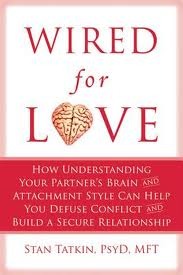More on this book
Community
Kindle Notes & Highlights
by
Stan Tatkin
Read between
January 24 - January 29, 2024
However, not all of us had relationships in early childhood that felt secure. Perhaps we had several rotating caregivers, without one who was consistently available or dependable. Or perhaps we had one or more caregivers who primarily valued something else more than relationship, such as self-preservation, beauty, youth, performance, intelligence, talent, money, or reputation. Maybe one or more caregivers emphasized loyalty, privacy, independence, and self-sufficiency over relationship
fidelity. Almost anything can supplant the value of relationship, and often when this occurs, it is not by choice. A caregiver’s mental or physical illness, unresolved trauma or loss, immaturity, and the like can interfere with a child’s sense of security. If this happens to us, then as adults we come to relationships with an underlying insecurity. That can lead us to keep to ourselves and avoid too much contact, instead viewing ourselves as an island in the ...
This highlight has been truncated due to consecutive passage length restrictions.
Was I expected to grow up quickly, act self-sufficient, and not be a problem?
Three Styles of Relating When speaking about attachment styles, psychologists use terms such as securely attached, insecurely avoidant, and insecurely ambivalent. To keep it a bit lighter here, I’m going to substitute the terms anchor, island, and wave.
Table 3.1 Strengths of the three styles of relating
Anchors aren’t perfect people, but they are generally happy people. They are given to feelings of gratefulness for the things and people in their lives. People tend to be drawn to anchors because of their strength of character, love of people, and complexity. They adapt easily to the needs of the moment. They can make decisions and bear the consequences. Anchors take good care of themselves and their relationships. They expect committed partnerships to be mutually satisfying, supportive, and respectful, and will not bother with unsafe or nonreciprocal relationships. They do not give up on a
...more
Exercise: Are You an Anchor? Do you believe yourself or your partner might be an anchor? Look at this checklist and see if it fits—first for yourself, and then for your partner.
“I’m fine by myself, but I prefer the give-and-take of an int...
This highlight has been truncated due to consecutive passage length restrictions.
“I value my close relationships and will do what it takes to keep the...
This highlight has been truncated due to consecutive passage length restrictions.
get along with a wide variety...
This highlight has been truncated due to consecutive passage length restrictions.
“I love people, and people tend ...
This highlight has been truncated due to consecutive passage length restrictions.
“My close relationships aren’...
This highlight has been truncated due to consecutive passage length restrictions.
“Lots of physical contact and affection is...
This highlight has been truncated due to consecutive passage length restrictions.
When Chiana married Carlos, however, he became the home she experienced in childhood. She does not expect frequent interactions with him, including sexual intimacy. Although she enjoys his company, she finds it hard to shift out of her alone time. His bids for attention often feel jarring, as if he were trying to make her do something against her will. She tends to resist until he has coaxed her to come closer and engage with him. Once this shift is made, she adjusts and enjoys being with him. However, when left alone for even a few minutes, she again becomes absorbed in her private world.
I want to reiterate: there is nothing inherently wrong with being an island. Merely conjuring up the image of lounging on a lush tropical island is enough for many people to feel a rush of endorphins. In the context of a couple’s relationship, however, difficulties can arise if one or both partners are addicted to alone time, especially if they don’t know it. Instead of seeking the closeness of a couple bubble, the addicted partner avoids it. Feelings of loneliness are obscured by the dreamlike state generated during alone time.
Two islands can court disaster simply through their high tolerance for being apart from one another. For example, when Carlos is away on business, Chiana doesn’t feel a loss. Her relief at the absence of interpersonal stress is greater than her awareness of loss or of being left. If tolerating time alone were comparable to holding one’s breath underwater, islands could hold their breath much longer than anybody else.
Exercise: Are You an Island? Do you recognize yourself and/or your partner from our discussion thus far? Here are some statements that are typical of an island. See if any ring a bell for you—either for yourself or your partner. “I know how to take care of myself better than anyone else could.” “I’m a do-it-myself kind of person.”
“I thrive when I can spend time in my own private sanctuary.” “If you upset me, I have to be by myself to calm down.” “I often feel my partner wants or needs something from me that I can’t give.” “I’m most relaxed when nobody else is around.” “I’m low maintenance, and I prefer a partner who also is low maintenance.”
relationships. They have not created a couple bubble, and they don’t have an agreement to put their relationship first. If Kaylee overcame her
Exercise: Are You a Wave?
“I take better care of others than I do of myself.” “I often feel as though I’m giving and giving, and not getting anything back.”


